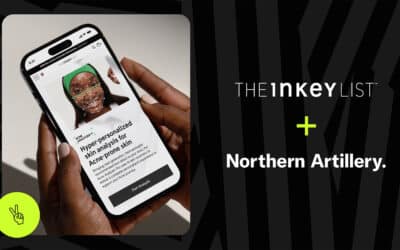Marketing to older people can quickly conjure up very clichéd images of retired couples strolling on the beach or riding a bike along a country lane. Yet this massive and lucrative market is definitely no niche, it encompasses consumers from all walks of life who just happen to be over 50, writes Steve Moncrieff, client strategy director, ewe agency.
For individuals, age is a relative concept, and one that has changed considerably just in one generation.
It has long been known as the richest and fastest growing segment of the UK population, with large disposable incomes and a desire to still remain ‘cool’. This segment shop on the high street at White Stuff, Top Shop, Gap and Next, as well as the over 50’s stalwarts of Marks & Spencer and John Lewis.
They use smartphones and tablets, shop online and regularly holiday abroad. Using their iPads to search and purchase online rare vinyl editions of Neil Young’s Albuquerque to looking for the latest deals on their next cruise.
Nowadays, dads and men of 50 plus are wearing jeans, and they are not even ‘dad jeans’, they are trendy jeans and they’ve got trendy shoes on too
So why do so many businesses and marketers treat this segment with such disdain?
The fixation of marketing to a group solely based on ‘Age’ is already passé. We obviously need to know as much about our customers as possible to ensure that our messages are relevant and engaging. And how do we do that? Market Segmentation and increasingly personal/ relevant communication are the keys.
 Steve Moncrieff
Steve Moncrieff
How many companies do we see pouring millions of pounds into advertising for very specific age groups and demographic profiles – the cool kids, the ‘John Lewis’ parents, the fun loving twenties, the free spending thirties, yet so often marketers will lump anyone over 50 into one homogenous group – a group who’s needs are changing faster than any other group.
The over 50’s hold 80% of the nation’s wealth and the 55-64s, have the highest disposable income of any age group and account for over a third of the population. In a study by Age UK they found that the over 50s wield almost £280 billion of annual purchasing power, and still growing.
The problem is that they’re an audience of extremes, making them difficult to get a handle on for marketer. Older and younger, moving and staying put, in families, couples and living alone, more active than ever but predominantly obese, richer as a whole but with pockets of extreme poverty, technically illiterate generation but increasingly digital.
The opportunities to build a better customer experience
This last trend is perhaps our greatest opportunity as marketers. Over the next 10 years this audience will be transformed by an ever-improving integrated single customer experience.
The ability to create a data driven relationship with this audience both on and offline should make it possible to apply the principles of classic direct response marketing in a far more dynamic way. Indeed, by taking time to get to know customers, capture their data, use it then intuitively to add value and track their responses, we should be able to understand them more than ever.
So what does this audience want from companies and brands, they want products and services that are designed around the needs of their lifestyle. Whether financial services, travel, luxury goods, or online dating, one thing’s for sure: no one likes to be called ‘old’, retired or be referred to as over a certain age, or being shown older than they are or believe they are.
We should ‘put ourselves in the customer’s shoes’ and forget the traditional idea of a ‘segment’ of people defined by their age. The over-55s are not a homogenous group, as mentioned, who reach a certain birthday and morph from individuals into convenient consumer stereotypes.
There are several generations between the ages of 55 and 100, and the individuals defy traditional segmentation. The Rolling Stones have an average age of 72, meanwhile, 55-year old Madonna, continues to shock to the pop and fashion world.
How do we engage with them to create great customer experiences?
•Understanding what it is they like about the product or, perhaps more importantly, what it is that’s stopping them from buying it. Defining the audience with more precision than simply ‘over 50’s’.
•Design communications to sell the product, not as a sad plea to appeal to the audience. For example, we’ve found that ‘Insurance that rewards your driving experience’ is far more effective than saying ‘Insurance for the over 50’s’. For me at least, anything that says it’s designed for the elderly conjures up images of Zimmer frames, stair lifts, flowery wallpaper and wipe-clean materials. The over 80’s are the new over 60’s.
•Look at engaging the audience through understanding the complete customer journey, not necessarily the traditional media channels. eMarketer projections for penetration of Facebook usage forecast growth to 37% of over 65’s by 2017, and growth in digital video viewer penetration to 46%. This means there’s a prime opportunity to target through less saturated channels, whilst recognizing the Halo effect of all integrated campaigns.
By combining online and offline profiling tools, we can begin to segment the over 50’s, after all old age is just a state of mind.
Personalisation and the arrival of ‘big data’ has meant we can talk to customers in a more personal and effective way than ever before. We can treat consumers in their early 50’s completely different to those in their 60’s and 70’s, we can layer over lifestyle data we have appended or captured, their purchasing habits and trends, we can gain real insight into their particular experiences and journey’s with brands. We are no longer bound by the restrictions of birthday’s and income.
One size and channel does not fit all
With 54% of over 55s using the internet to research products and services, for many the first interactions with a brand may not be in store at all. Websites, online promotions and apps therefore need to be designed with this in mind. Clearly this consumer interact with brands differently and many retailers and financial services companies need to rip up their preconceived customer engagement strategies.
They must first find out what makes them tick. This shouldn’t be a knee jerk reaction to abandoning direct marketing and the traditional channels, it’s important that we continue to deliver integrated and holistic campaigns, many in this segment see these channels as triggers to online and search.
Don’t fall into the trap of abandoning all traditional channels and thinking a digital campaign will deliver all your campaign objectives and ROI targets.
When targeting this growing segment of the population you should consider:
•Simply making mass-market products more appealing to the over 50s
•Use online channels to attract and boost sales, particularly in areas of health, travel and finance
•Understand how these shoppers want to receive guidance and information.
•Developing the Customer Experience is about developing a successful strategy through continuous experimentation, measurement, testing, learning and adapting.
The core to this process is to discover where to find valuable customers irrespective of their age, and how to convert them into buyers, with the least amount of money and with the highest possible ROI.
Steve Moncrieff is the client strategy director of ewe agency in Leeds.








